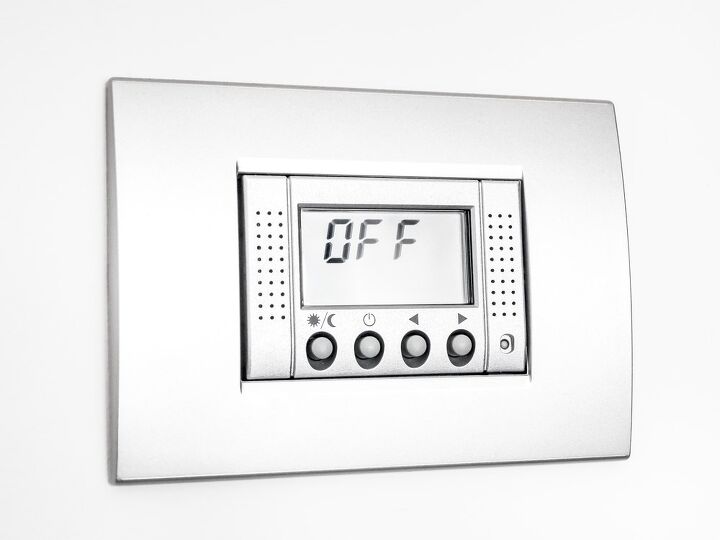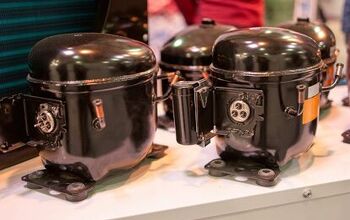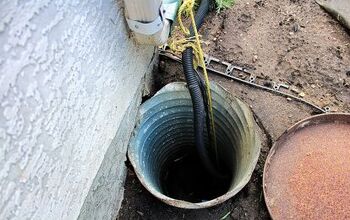Heater Is Still On When Thermostat Is Off? (We Have a Fix!)

Your thermostat is meant to be the “brain” of your HVAC system. It’s supposed to control the goings-on involving your AC unit, heater, and to a point, your ventilation. Once in a blue moon, your thermostat will stop working or will just shut off. So, what does it mean when your heater is still on when this happens? Should you panic?
If you are considering upgrading your heating or air conditioning system, get a quote from local contractors in your area here.
The most common reason for a heater that remains on while the thermostat shut off is that you have a wiring issue. Clearly, something is touching the wiring that leads to the furnace, which means that it’s still getting a signal. This usually means you have a short in either your thermostat or HVAC system.
I’m not going to lie. I’d be baffled if I saw this happening to my home, too. Thankfully, a little bit of research was able to reveal a ton about this perplexing and often slightly scary problem.
Video: Why This is Happening & What to Do
Before You Panic: Rule Out Common Mistakes
Is your thermostat really off, or is the heat portion just switched off? You might be surprised. There are several different ways to define this problem, and in the vast majority of cases, it just means that you are getting an “off” signal from your thermostat. Before you assume that it’s something serious, let’s take a look at common mistakes.
The End Of A Run
When you set up your thermostat to heat your home to a certain temperature, it will heat up to that temperature and then shut off. The thing is, it doesn’t shut off immediately. For a couple minutes after your thermostat shuts off, your furnace will still run. It just has to finish up its cycle, that’s all.
Wait for 10 to 15 minutes. After that point, you should hear everything power down if it is a matter of a cycle. You will notice less hot air coming out of the vents and more. If it’s still running, it could be something else that’s going on.
Check The Furnace Fan
Sometimes, your furnace fan might be switched on as a way of cooling things down. When this happens, it’s easy to mistake the running fan for having the heat on. If this is the case, you’ll notice that the air is cool (or just room temperature). Try to shut the fan off to see if this is the case.
Note: You also could have the fan limiter switch on “MANUAL.” This means that you may need to manually shut off the furnace fan to see if it’s the case. If your furnace is actually the thing that’s running, you’re going to have to look at your thermostat and the electric circuitry it has.
A Need For A Restart
Thermostats can get stuck on certain signals, especially if they’ve been on continuously for quite some time. This means that you might not have too much of a problem. Sometimes, you just need to do a reset on your thermostat. Once your thermostat is reset, give your thermostat some time.
If you still notice that your thermostat isn’t working the way it should and your furnace is not shutting off, you should move on to another diagnostic test. This suggests that it could be something a little bit more pressing.
How Can A Heater Still Be On If My Thermostat Is Shut Off?
A heater can still be on if your thermostat is off. However, it’s not a good thing if it is. I mean, it’s clear something is wrong since everything should be off if your thermostat is off. Let’s look at the main issues that can cause this below!
It Could Be The Wiring To Your Heater
Sometimes, it’s not a matter of the thermostat that needs help, but the wiring that carries signals from your thermostat to your heater. If this is the case, you may notice a frayed wire or other signs of wiring corrosion. You can fix this by removing and replacing the wiring that runs from your thermostat to your heater.
Obviously, this can be a bit much for some people to do on their own. If you’re not comfortable with working with wiring, call an HVAC tech or electrician.
A Short In The Thermostat
In order for your heater to still stay on when your thermostat is off, there has to be some kind of power routing to your wiring. The thing is, a short in your thermostat can end up blocking the power to most of your thermostat while continually supplying the furnace portion with electricity.
At first glance, you may have a thermostat that looks dead but still sends signals at random. Sometimes, that signal could be to your furnace. If you believe this to be the issue, then you may have to get a new thermostat. There’s no fix for this aside from replacement, sadly.
A Bad Control Board
Out of all of the problems that could cause your heat to keep running after your thermostat shuts off, this is the worst. In this situation, your furnace’s control board is on the fritz. This suggests that your control board keeps thinking that you’re giving it endless calls for heat when it’s not.
So, there are a couple of ways to try to fix this:
- First, try to shut the furnace off manually, then turn it on again. Restarting your furnace manually is always a good move. Like with most other technology, it’s possible to get some issues cleared up through a quick restart. This might make your control board break out of the loop it’s in.
- You may also want to replace your control board. This is a pain in the butt, not to mention an expensive fix. If you have reason to believe that you have a control board that’s faulty, you might need to get an HVAC tech to diagnose it. Hopefully, this is not the case.
- The worst thing that can happen is that you may need to replace the furnace. This is highly unlikely, but it can happen if the control board and other parts have started to fail. In most cases, this is a general decision to replace an old furnace rather than a fix for the control board.
Should You Call A Professional HVAC Tech?
Believe it or not, professional HVAC techs are the best way to fix this issue. There are a lot of different issues that could make this occur, especially when you have a highly complex circuit. Since there is a chance that you could have an electrical issue sparking this problem, calling a pro is a good way to avoid having a fire hazard on your hand.
A good rule of thumb is that you should always try to call someone if you do not feel comfortable fixing your own system. Assuming that replacing your thermostat or restarting it didn’t work, it may be time to consider it. If there is any reason to suspect a furnace problem, call an HVAC tech immediately.
How Much Will This Cost To Fix?
Excluding the chance of replacing your whole furnace, the cost to fix this could be free of charge if you do it yourself or it could cost a fortune. A typical HVAC professional will charge $50 for a quick diagnostic, and from there, you might have an additional $150 to $500 for repairs on control panels or circuit boards.
It’s important to remember that you may have an electrical issue that’s causing this. If this is the case, then you may have a higher price point than what others would typically spend. With all that said, the range of prices you may have to pay is so wide, it’s really best to assume it’s best to go on a “case by case” basis.
Related Questions
What can cause a short circuit in a thermostat?
A short circuit can be caused by a wide range of different things, including a major surge in the power grid. However, it often has more to do with damage that is done to the wiring inside the thermostat. While you can have a short from a poorly manufactured setup, it’s more commonly caused by something like flooding or overheated circuitry.
Why does my thermostat shut off before my furnace does?
Thermostats are meant to trigger cycles on heating and cooling, not act as a direct switch to everything. In other words, when your thermostat says the heat is now off, it’ll take a while for the heating element of your home to finish up. It’s basically telling your furnace, “Okay, that’s enough. Wrap up that last bit of heat, and we’re good to go.”
How often should you replace the fuse in your thermostat?
You honestly should only replace the fuse in your thermostat when it blows. If you notice that you’ve been replacing fuses at a fast rate (more than once every year to six months, max), it may be time to call an electrician. This suggests that you may have a latent electrical issue driving more electricity to your unit than you should get.
UpgradedHome participates in affiliate programs. When you purchase through our links, we may earn a commission.

Ossiana Tepfenhart is an expert writer, focusing on interior design and general home tips. Writing is her life, and it's what she does best. Her interests include art and real estate investments.
More by Ossiana Tepfenhart















![12 Washing Machine Brands to Avoid [with Recall Data]](https://cdn-fastly.upgradedhome.com/media/2023/07/31/9075781/12-washing-machine-brands-to-avoid-with-recall-data.jpg?size=350x220)











